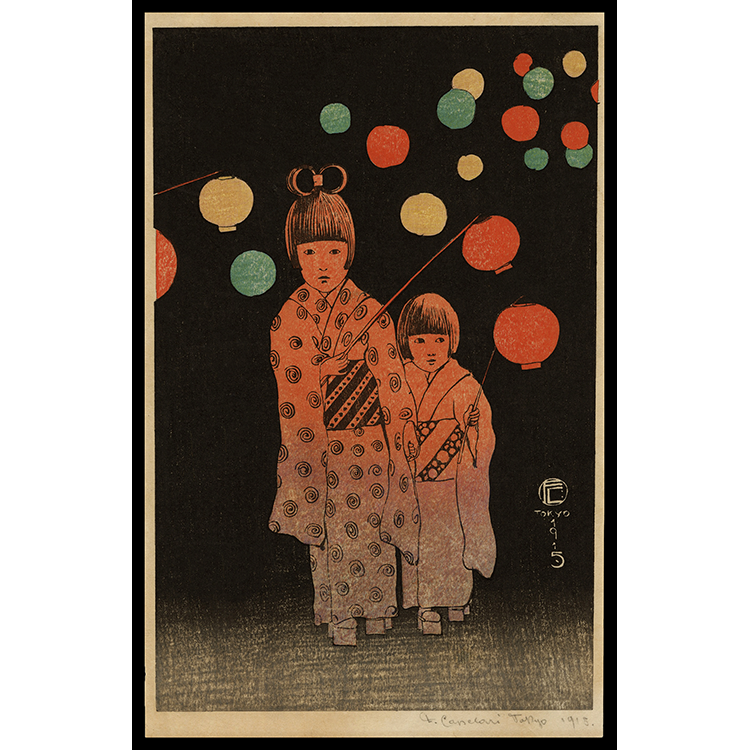Details
The publisher Watanabe Shōzaburo started his enterprise reproducing well-known Ukiyo-e designs during the late Meiji period. Seeing an opportunity to produce original work and revitalize the art of woodblock prints, he first hired the Austrian artist, Fritz Capelari. Capelari produced more than a dozen designs for Watanabe and is credited with being among the first Shin Hanga artists. Thus, his work created a blueprint for combining Western aesthetic concerns with Japanese motifs that influenced Watanabe and his future stable of artists.
This design is considered among Capelari's most sought-after Watanabe published prints. Its striking composition features a bright, blue-skied backdrop playing host to an elegant snowcapped Mt. Fuji surrounded by a deep desolate field. The success of this relatively simple design owes much to the masterful printing effects of Watanabe's skilled craftsmen, under his direct supervision. Of particular note are the baren sujizuri (swirls) and bokashi, or color gradation, found throughout the sky and in the field that gives this impression a wonderful sense of texture and depth. It is precisely through these printing effects that the print effectively invokes a quiet, contemplative quality with a strong poetic sensibility.
Connoisseur's Note
Mt. Fuji from a Desolate Field is an exceedingly rare work. The great Kanto earthquake of 1923 destroyed the original Watanabe print shop and studio, including the printing blocks and unsold inventory for this design. Only impressions of this print sold before the earthquake and removed from Tokyo survived the earthquake and ensuing fires that consumed the city.
The Shin Hanga scholar, Kendall Brown, in his book Water and Shadow, translates Watanabe's notes on the production of this print: "Lines, dry printed and twice block printed. Mount Fuji, twice printed with indigo. Foreground, lineless shading done by brush; it's a new technique. Paper, a special thick paper with uncut edges, so that horizontal lines show up. Design in the style of Korin. First-ever shin-hanga in Japan. Carver created blocks, expressing traces of line with the power of brush[work]. The printer would not listen to me, insisting on the conventional "Fixed block" method, saying it's better for flat coloring. I had to show him how to print. First-day printing in Japan, revealing natural grains. After the printers saw my way, they departed from convention, adopting the natural way."




